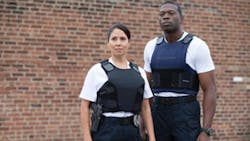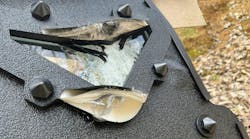Content provided by Propper
Throughout the centuries, soldiers and warriors have looked for better and better ways to fend off attacks and keep themselves safe from deadly weapons. From knights in shining armor to Japanese Shogun warriors, personal protection has always been a priority for those going into battle. Leather, chainmail and steel were the primary materials in armor, with conventional thinking falling on the idea that the harder the material the better the protection. Swords and knives were the most common weapon of choice, and warriors wanted something that would deflect the blow.
That was then, this is now. Since bladed combat is no longer as common today and bullets are the biggest threat, armor construction has changed considerably. All those heavy, rigid and bulky materials have been replaced with much lighter-weight synthetic fibers that can be sewn together into ballistic vests designed to be hidden under clothing or even made into the clothing itself, such as a windbreaker or a pair of pants. Erroneously called “bulletproof vests” when they first emerged, ballistic armor is really only bullet-resistant. Even the best body armor can be penetrated with a powerful enough bullet or repeated shots. It’s not designed to be indestructible.
How much force does it take to stop a bullet? How exactly does body armor work?
The interior of the armor is where the bullet stopping takes place. The outside carrier is mostly decorative, designed to either match a uniform or be neutral enough to go with anything. However, the inside consists of two different types of materials that work to create the true stopping power of the vest.
Para-Aramid Weave
Laminates
In addition to para-aramid weave, laminates such as ultra-high molecular weight polyethylene (UHMWPE) also make great bullet-stopping materials. Dyneema® is one brand of UHMWPE that is commonly found in ballistic armor because it is incredibly strong – up to 15 times stronger than steel, in application – extremely durable and up to 40% lighter-weight than para-aramids.
Ballistic Plate
Rating System
How do you know what type of armor will suit your needs? The National Institute of Justice (NIJ) sets the standards for body armor manufacturers, broken down by six protection levels:
- Type I
- Type II-A
- Type II
- Type III-A
- Type III
- Type IV
Choosing the Right One
There are two basic categories of body armor: concealable and tactical. Which level is right for you depends on the situation. Types I through III-A are the most common levels worn by police officers during routine patrol, as most of the armed criminals they are likely to encounter will carry small-to-medium caliber handguns. These vests tend to have the slimmest profiles, allowing for easy concealment under a uniform shirt or in a uniform-matching outside carrier.
Type III and IV are often reserved for tactical/SWAT teams who are likely to face .223, .308 and other high-velocity rifle rounds. These vests are designed to be worn over a uniform or thrown on over concealed armor at a moment’s notice, especially for first responders to a high-risk incident.
Blade Protection
Proper Fit
For body armor to perform the most effectively, it must cover the wearer’s vital organs and other important areas, so it needs to fit properly. There are two basic designs for body armor: 2-panel “clamshell” and 4-panel wraparound. The 2-panel configuration offers good front and back protection but can be a bit uncomfortable and doesn’t provide the same level of side intrusion protection as a 4-panel design, which includes dedicated side panels that work independent from the front and back. Every person is slightly different in height and girth, so to assure the maximum protection and to make it as comfortable as possible to wear, each vest should be custom fit to the individual wearer. Men and women have different fit needs, as well. This NIJ video explains how to fit the vest correctly to ensure both maximum protection and maximum comfort.
Whichever body armor you choose, make sure it is appropriate for the level of protection you need and that it fits right.







